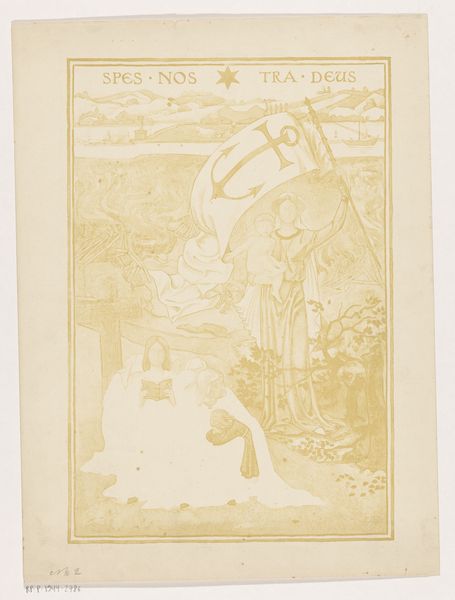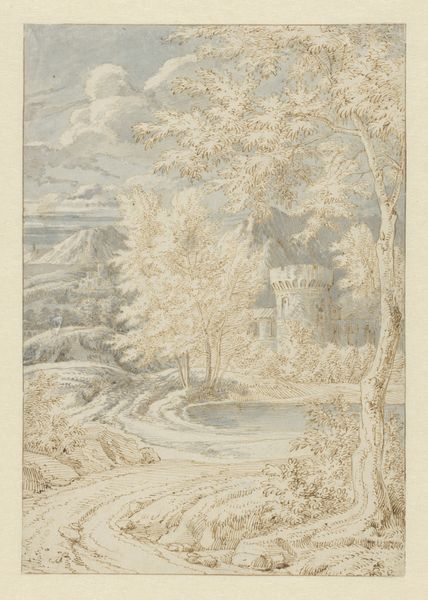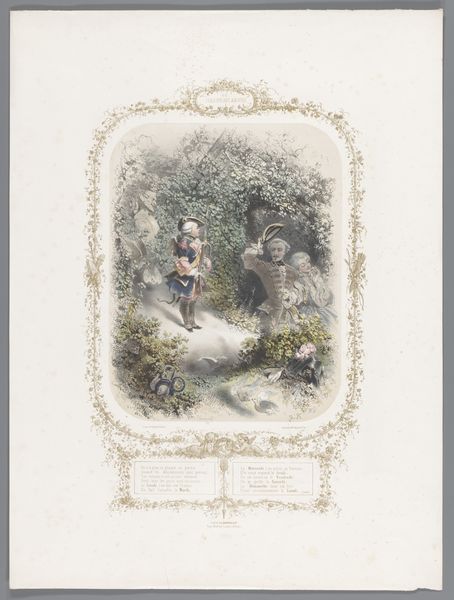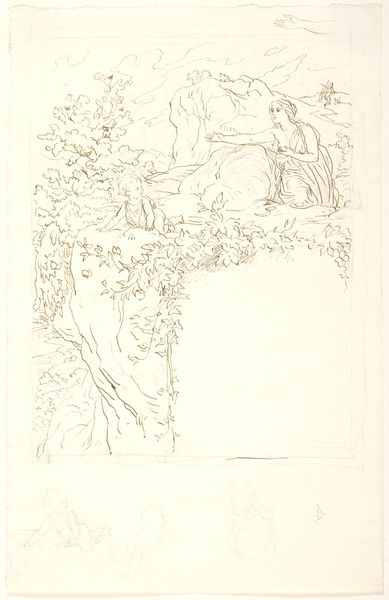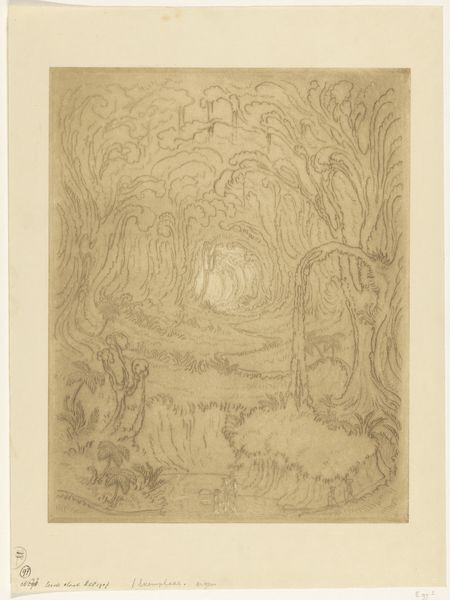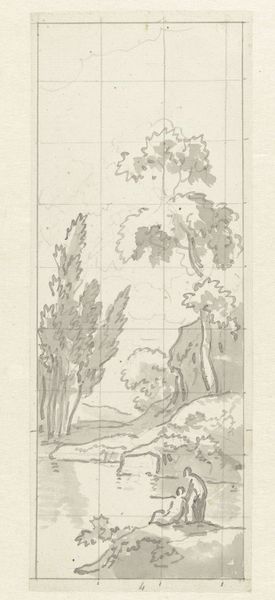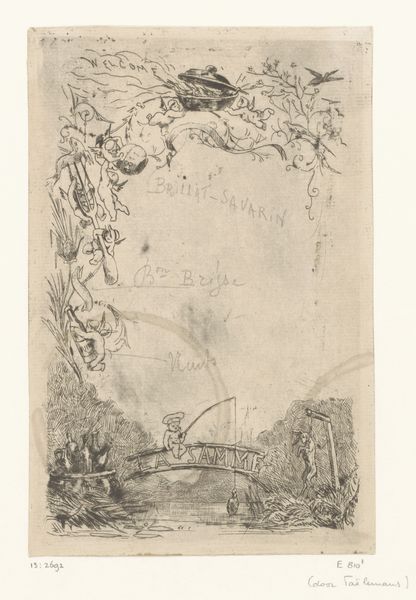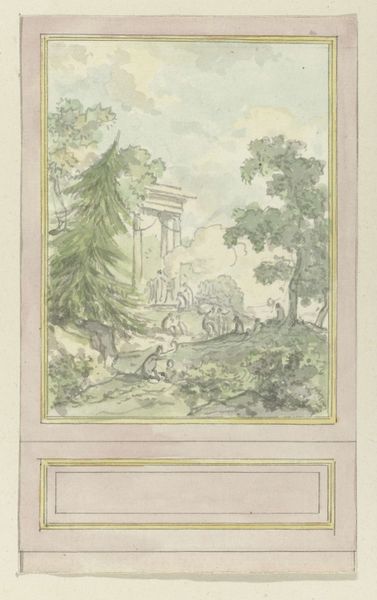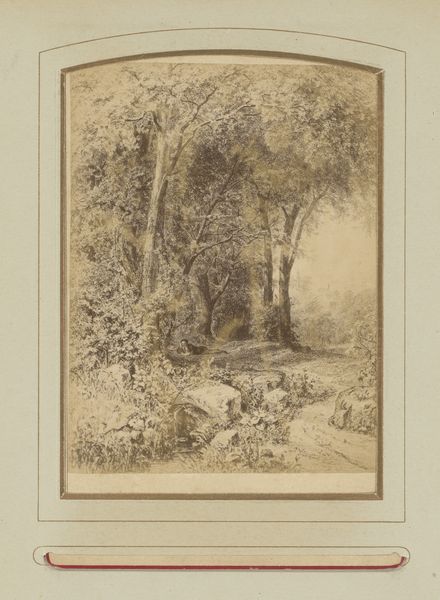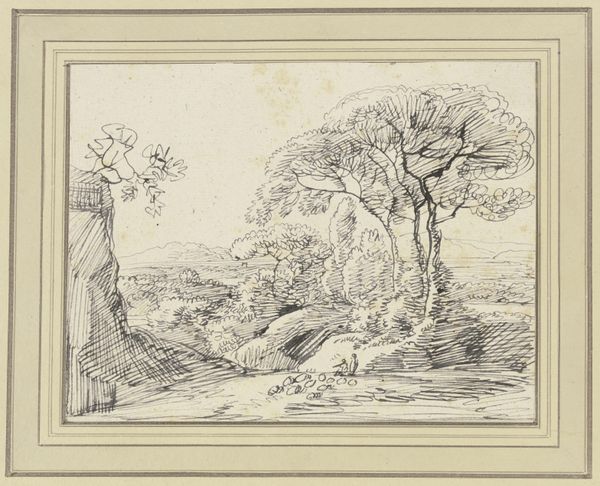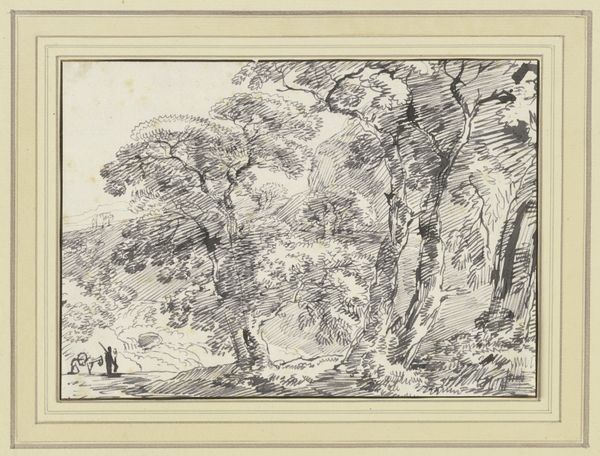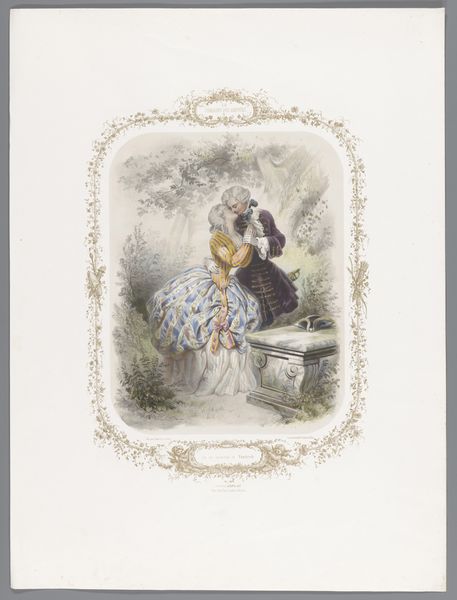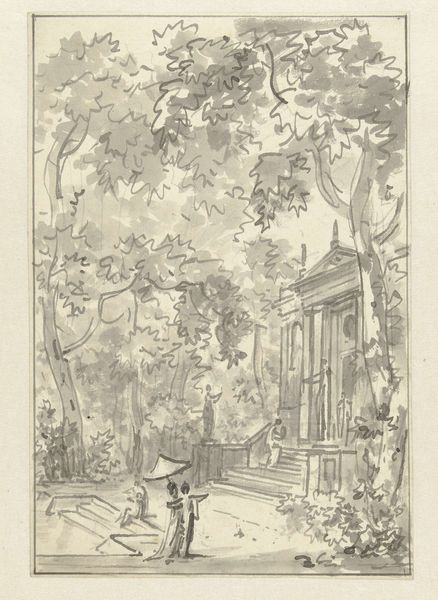
drawing, gouache, plein-air, paper
#
drawing
#
16_19th-century
#
gouache
#
plein-air
#
landscape
#
botanical illustration
#
paper
#
romanticism
#
watercolor
Copyright: Public Domain
Curator: Here at the Städel Museum, we have a lovely plein-air gouache and watercolor drawing titled "Gruß aus Kronberg im Taunus" by Minna Roberth. It seems to depict a peaceful afternoon in the German countryside. Editor: It's quite charming. There's a definite air of tranquility. The subdued colors create a soft, almost dreamlike atmosphere. The eye is led up and into a fairytale castle overlooking all the peacefulness down below. Curator: The symbolism of a distant, dominant structure overlooking an idealized scene of human harmony resonates strongly. Do you get the sense that the image seeks to represent a specific, longed-for harmony and ideal? Editor: Possibly. But, look closely at how the paper is ornamented to make this function as a keepsake of a landscape visit. The rendering makes you think it has been produced as a memento or an advertising card or calling card perhaps? Look how much untouched and ornamented space there is! What's your read? Curator: It does. Those vines winding across the bottom suggest natural growth, perhaps symbolizing resilience and connection to place? The presence of lovers at rest creates a feeling of nostalgia for quiet moments together in times past. Editor: I agree about the vines, but I am stuck on how much empty space there is, a negative shape in a horizontal scroll dominating the composition and almost obliterating all the other sensitive and loving detail. The vines act almost like chains in their domination of this work's surface. There is almost too much material ornamentation in this illustration to make it entirely read as successful as a piece. It strikes me that perhaps there are many unseen and other artisans who might be the creators or manufacturers, like craft makers of today? Curator: Your interpretation of the vines as constricting, almost threatening, certainly introduces an interesting perspective. While on the surface it appears idyllic, there may be a sense of subtle entrapment. It is something to think more about. The tension created by competing ideals. Editor: Yes, the layers beneath. I'll look at 19th century visiting and material manufacturing processes differently, in relationship with aesthetics. Thanks.
Comments
No comments
Be the first to comment and join the conversation on the ultimate creative platform.
